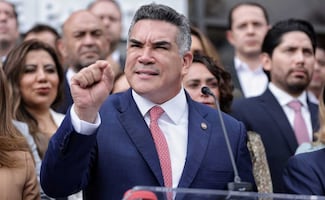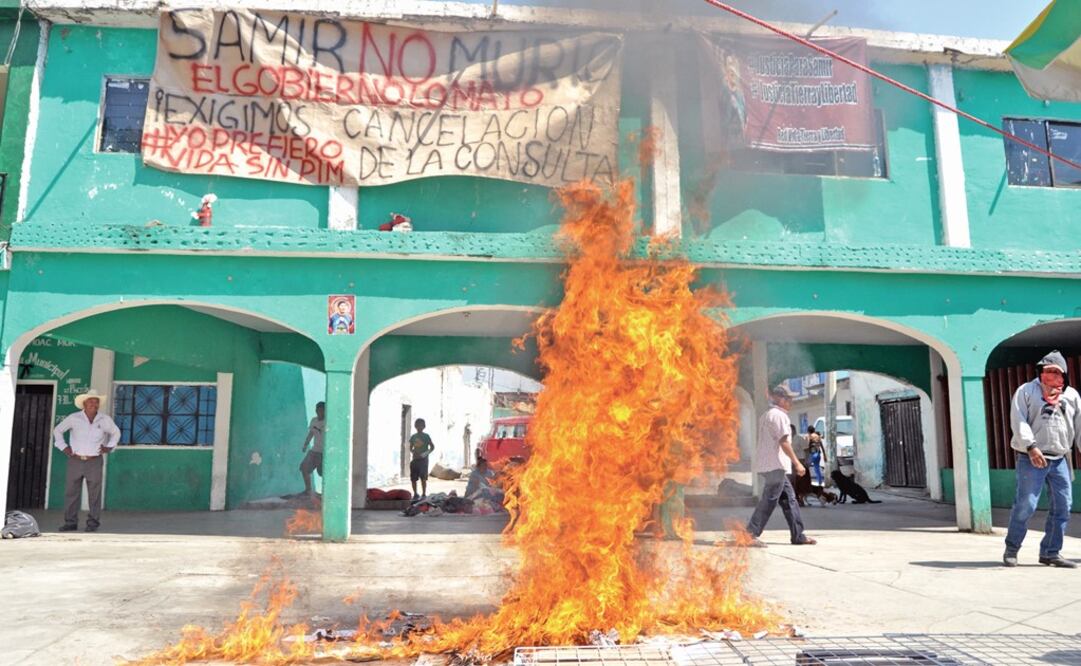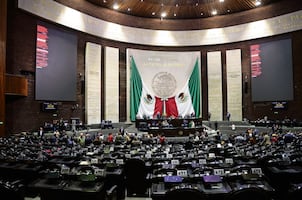Más Información

Alito Moreno afirma que México debe ser aliado de EU ante dictaduras como la de Maduro; "¡Venezuela libre ya!”

Morena va contra “Ley Esposa” en SLP que postula solo mujeres en 2027, señala Alcalde; prepara acción de inconstitucionalidad
The thermoelectric plant in Huexca, Morelos is part of the Morelos' Comprehensive Project . The plant generates electricity through a gas turbine.
For this plant, the Federal Electricity Commission (CFE) invested USD $700 million , which is set to generate 622 megawatts of electricity.
The project dates back to 2011 when Felipe Calderón was President and during Peña Nieto's presidency , it was announced that the plan would continue but it was never implemented. President López Obrador decided to resume the project because he claims the electricity tariffs will be cheaper for the inhabitants of Morelos, Puebla, and Tlaxcala.
Despite several demonstrations against the thermoelectric plant and the murder of Samir Flores Soberanes, a fierce opponent of the plant and an environmental activist , the federal government decided to carry out a referendum to decide the fate of the project this past weekend.
Today, the President announced the project was approved but the turmoil continues.
But why do entire communities reject the project?
The opponents' main fear is that the thermoelectric plant will pollute the water in the area. Also, they are concerned about the gas pipeline , which runs through the area near the Popocatépetl volcano .
During a visit to this community, the President claimed the government would guarantee that the plant didn't pollute and also said that the administration would ask the UNESCO to monitor and certify the quality of the water from the Cuautla river .
The referendum
The referendum took place in Morelos, Puebla, and Tlaxcala this past weekend. On this regular morning conference, the President said that although it took place at the midst of a polarizing atmosphere, he was satisfied with the result: “It is a good democratic exercise in a very polarizing atmosphere because, as we've seen, this project was imposed by the previous government without a referendum . Several communities were affected, there was repression , and a movement against the thermoelectric plant and the gas pipeline , but we had to face this issue.”
Nevertheless, the People's Front in Defense of Land and Water (FPDTA) rejects the results and said the referendum was rigged . The organization is waiting for protection measures to be issued by the authorities and it hope s international organizations intervene in the case.
During a press conference, Jorge Velázquez, the leader of the Amilcingo indigenous community , said that in the municipalities that will be affected by the thermoelectric plant such as Cuautla, Yecapixtla, Ayala, Jonacatepec, Jantetelco, Temoac, Zacualpan de Amilpas, and Tetela del Volcán , people voted against the project.
The members of the People's Front announced that they will reach out to international organizations because the project violates the rights of the indigenous people.
Velázquez said they are analyzing the situation and that they could block roads to protest against the project.
gm
Noticias según tus intereses
[Publicidad]
[Publicidad]













